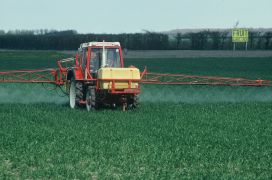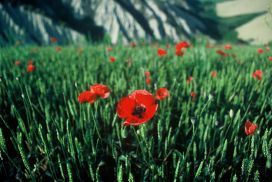Differences
This shows you the differences between two versions of the page.
| Both sides previous revisionPrevious revisionNext revision | Previous revision |
| capri:concept:spatialdownscaling [2023/06/02 09:45] – [Indicators characterising impacts of agriculture on the environment:] gocht | capri:concept:spatialdownscaling [2023/06/02 09:50] (current) – [Methodology] gocht |
|---|
| |
| |
| The basic methodology for spatial down-scaling had been jointly developped by the Joint Research Centre and the Institute for Institute for Food and Resource Economics, University of Bonn, to a large extent in the context of the [[http://www.ilr1.uni-bonn.de/agpo/rsrch/dynaspat/dynaspat_e.htm|CAPRI-Dynaspat project]]. The team from JRC comprised members of the AgriEnv action, as well as of the Climate Change Unit. The down-scaled data are produced by statistical estimators for [[:capri:concept:SpatCrops|cropping shares,]] [[:capri:concept:SpatYields|crop yields]], [[:capri:concept:StockDens|animal stocking densities]], and [[:capri:concept:spatFert|fertilizer application rates]], starting from the regional data base of CAPRI. The data presented online cover a three year average 2001-2003, but data set had also been projected to 2013 and estimated for counter-factual policy scenarios. | The basic methodology for spatial down-scaling had been jointly developped by the Joint Research Centre and the Institute for Institute for Food and Resource Economics, University of Bonn, to a large extent in the context of the CAPRI-Dynaspat project. The team from JRC comprised members of the AgriEnv action, as well as of the Climate Change Unit. The down-scaled data are produced by statistical estimators for [[:capri:concept:SpatCrops|cropping shares,]] [[:capri:concept:SpatYields|crop yields]], [[:capri:concept:StockDens|animal stocking densities]], and [[:capri:concept:spatFert|fertilizer application rates]], starting from the regional data base of CAPRI. The data presented online cover a three year average 2001-2003, but data set had also been projected to 2013 and estimated for counter-factual policy scenarios. |
| |
| The data and methodology allows the //AgriEnv// action at JRC-IES to perform environmental impact assessment of the Common Agricultural Policy, both ex-ante as in a forward looking exercises. //Agri-Env// has in 2007 used the methodology to forecast the probable development of gross nitrogen balances and the share of High Nature Value farmland in the EU up to 2013, in close co-operation with DG-AGRI and the [[http://www.jrc.es/activities/agriculture/sustag.cfm|SUSTAG]] action of IPTS/Sevilla. For 2008, an analysis of impacts of increased bio-fuel production in the EU is planned by down-scaling and analysing results of CAPRI bio-fuel scenarios. Parts of the down-scaled data set are used in large-scale European research projects as [[http://www.seamless-ip.org/|SEAMLESS]] and [[http://www.lucsus.lu.se/html/sensor.aspx|SENSOR]]. | The data and methodology allows the //AgriEnv// action at JRC-IES to perform environmental impact assessment of the Common Agricultural Policy, both ex-ante as in a forward looking exercises. //Agri-Env// has in 2007 used the methodology to forecast the probable development of gross nitrogen balances and the share of High Nature Value farmland in the EU up to 2013, in close co-operation with DG-AGRI and the SUSTAG action of IPTS/Sevilla. For 2008, an analysis of impacts of increased bio-fuel production in the EU is planned by down-scaling and analysing results of CAPRI bio-fuel scenarios. Parts of the down-scaled data set are used in large-scale European research projects as SEAMLESS and SENSOR. |
| |
| ---- | ---- |


